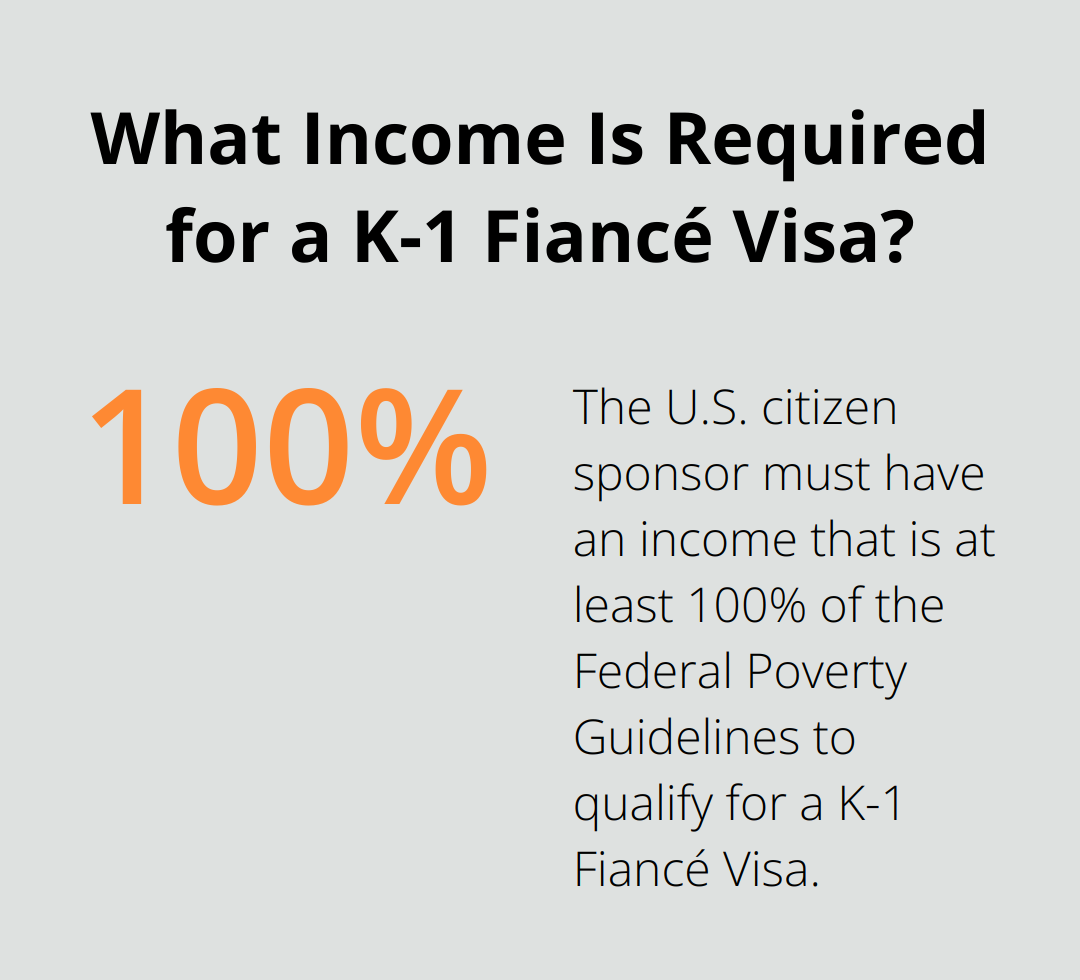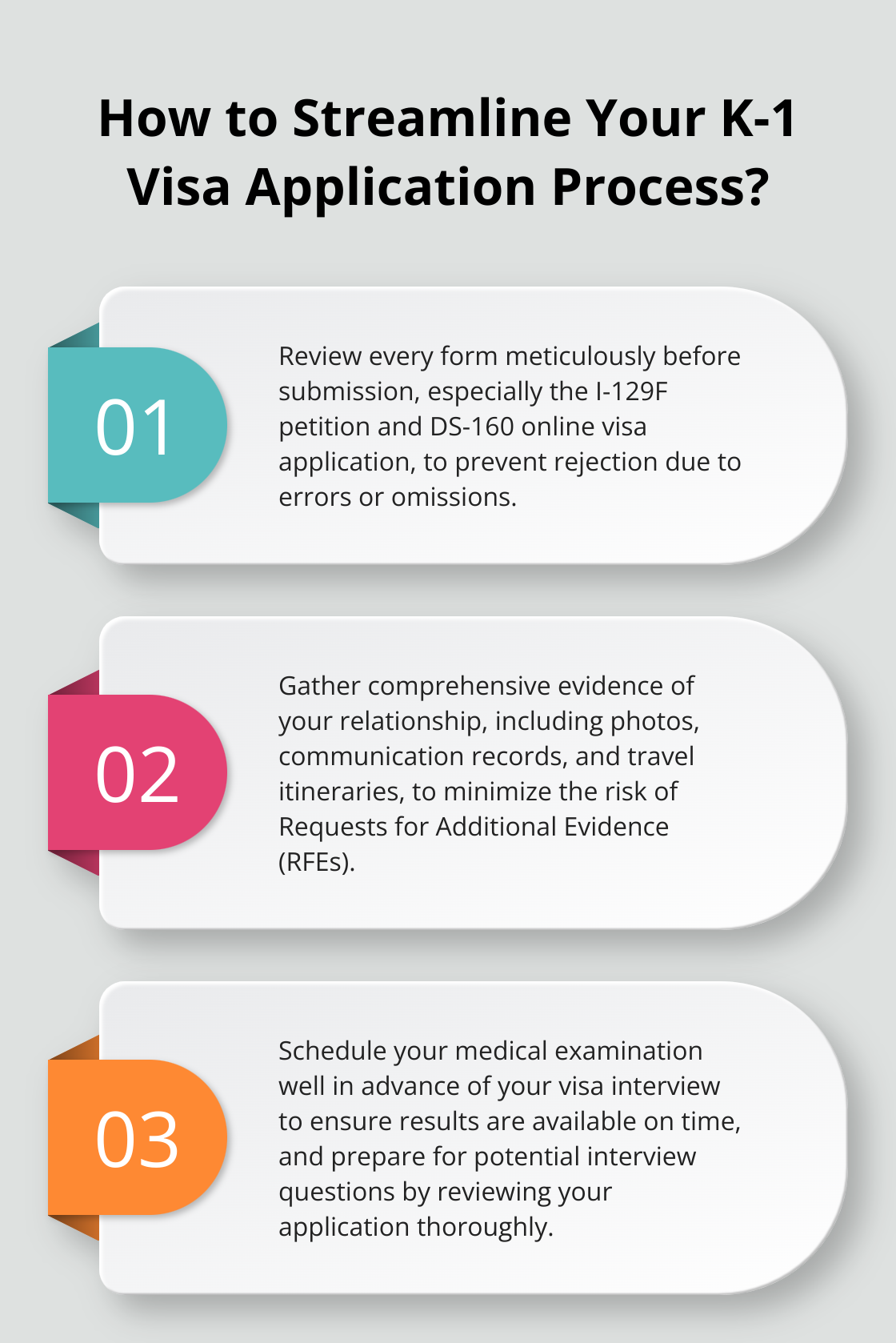
How Long Does the Fiancé Visa Process Take?
At Law Offices of Jeffrey A. Thompson, we often get asked, “How long does it take for a fiancé visa?” The K-1 Fiancé Visa process can be complex and time-consuming, with various factors influencing its duration.
Understanding the timeline and potential delays is crucial for couples planning their future together. In this post, we’ll break down the K-1 Fiancé Visa process, typical processing times, and factors that can affect your application’s progress.
What Is a K-1 Fiancé Visa?
Definition and Purpose
The K-1 Fiancé Visa is a nonimmigrant visa that allows a U.S. citizen to bring their foreign fiancé to the United States. The primary purpose of this visa is to unite couples with the intention of marriage within 90 days of the foreign fiancé’s arrival. This visa serves as the initial step towards permanent residency for many international couples.
Eligibility Requirements
To qualify for a K-1 Fiancé Visa, couples must meet specific criteria:
- Legal Status: Both parties must be legally free to marry (single, divorced, or widowed).
- Financial Requirement: The U.S. citizen sponsor must have an income that is at least 100% of the Federal Poverty Guidelines.
- In-Person Meeting: The couple must have met in person at least once within the two years prior to filing the visa petition (with few exceptions for extreme hardship or cultural practices).
Application Process Overview
The K-1 Fiancé Visa application process starts when the U.S. citizen files Form I-129F (Petition for Alien Fiancé(e)) with U.S. Citizenship and Immigration Services (USCIS). Historical data from USCIS shows processing times for various forms, including the I-129F, from fiscal year 2020 to 2025 (up to January 31, 2025).

After USCIS approves the petition, they forward it to the National Visa Center (NVC) for further processing. The NVC then sends the case to the U.S. embassy or consulate in the foreign fiancé’s country. At this stage, the foreign fiancé completes the DS-160 online visa application and attends a visa interview at the embassy.
Medical Examination and Interview Preparation
A critical step in the process is the medical examination, which an approved panel physician must conduct. This exam often includes vaccination requirements and must be completed before the visa interview. The average wait time for a K-1 visa interview is approximately one month (this can vary depending on the embassy’s workload).
Thorough preparation for the visa interview is essential. Couples should gather extensive evidence of their relationship’s legitimacy, such as photos, correspondence, and travel records. Proper preparation can significantly reduce the risk of delays or denials.
The next chapter will explore the typical timeline for K-1 Fiancé Visa processing, breaking down each stage and discussing factors that can affect processing times.
How Long Does Each Stage of the K-1 Fiancé Visa Process Take?
The K-1 Fiancé Visa process consists of several stages, each with its own timeline. Understanding these stages will help couples plan their future more effectively. Let’s break down the typical timeline for each phase of the K-1 Fiancé Visa process.
Filing and Processing the I-129F Petition
The journey starts with the filing of Form I-129F, Petition for Alien Fiancé(e). As of March 2025, you can check the case processing times for this form on the USCIS website. Processing times may vary depending on the form, form category, and the office processing your case.

USCIS usually sends a receipt notice within 30 days after filing. This notice contains your case number for tracking purposes, so keep it safe. If USCIS needs additional information, they might issue a Request for Evidence (RFE), which can add several weeks to the process.
National Visa Center (NVC) Processing
After USCIS approves the I-129F petition, they forward the case to the National Visa Center. The NVC’s processing time is generally shorter, averaging 6 to 8 weeks. During this phase, the NVC assigns a case number and provides instructions for completing additional visa requirements.
A key step during NVC processing involves the completion of the DS-160 online visa application. This form requires careful attention to detail, as errors or omissions can lead to delays or even visa denials.
Embassy Interview and Visa Issuance
Once the NVC completes its processing, the case moves to the U.S. Embassy or Consulate in the foreign fiancé’s country. The wait time for an interview appointment varies by location but averages about one month.
Before the interview, the foreign fiancé must undergo a medical examination with an approved physician. Schedule this exam well in advance to ensure results are available by the interview date.
The interview itself is a critical step. Consular officers use this opportunity to verify the relationship’s authenticity and the couple’s intent to marry. Thorough preparation, including gathering substantial evidence of the relationship, can significantly impact the outcome.
If approved, visa issuance typically occurs within a week after the interview. However, some cases may require administrative processing, which can add several weeks to the timeline.
Factors Affecting Processing Times
Several factors can influence the overall timeline:
- Completeness of application: Ensure all forms are filled out correctly and all required documents are included to prevent unnecessary delays.
- Background checks: Extensive background checks may lengthen the process, especially for applicants from certain countries.
- Embassy workload: Some embassies have longer wait times for interview appointments due to high visa demand.
- Administrative processing: Some cases require additional review, which can add weeks or even months to the process.
- COVID-19 impact: While many restrictions have eased, some embassies still face backlogs from pandemic-related closures.
Understanding these factors will help couples set realistic expectations and plan accordingly. The total K-1 Visa processing time may take approximately 10 to 16 months, but individual cases can vary significantly. The next section will explore potential delays in the fiancé visa process and how to avoid them.
What Can Slow Down Your Fiancé Visa Process?
The K-1 Fiancé Visa process involves several steps, and various factors can cause unexpected delays. Understanding these potential roadblocks will help you navigate the process more efficiently and avoid common pitfalls.
Application Errors
One of the most frequent reasons for delays is the submission of incomplete or inaccurate applications. USCIS currently rejects Form I-129 for several reasons, including lack of signature, incorrect fees, or omission of essential documents.

To prevent this, review every form meticulously before submission. Focus particularly on the I-129F petition and the DS-160 online visa application. These forms serve as the foundation of your application, and mistakes here can affect the entire process.
Extended Background Checks
Background checks form a critical part of the visa process but can also lead to significant delays. The Department of State conducts security checks on all visa applicants. Any red flags that appear can extend processing times.
Applicants from certain countries or those with complex travel histories might face longer wait times. While you can’t control this process, prepare a detailed account of your travel history and any previous visa applications to help expedite the process.
Requests for Additional Evidence (RFEs)
USCIS or the consular officer might issue an RFE when they need more information to make a decision on your case. RFEs can add weeks (or even months) to your processing time.
Common reasons for RFEs include:
- Insufficient proof of relationship
- Inadequate financial documentation
- Questions about eligibility
To minimize the risk of an RFE, provide comprehensive documentation from the start. Include detailed evidence of your relationship (such as photos, communication records, and travel itineraries).
Administrative Processing
After the visa interview, some cases undergo administrative processing. This additional security screening can significantly extend the timeline. The Department of State states that the duration of administrative processing will vary based on individual circumstances. Visa applicants are reminded to apply early for their visas.
While administrative processing often proves unavoidable, thorough and honest responses in your application and interview can reduce the likelihood of triggering this extra step. Prepare for your interview by reviewing your application and practicing potential questions.
COVID-19 Impact
The ongoing effects of the COVID-19 pandemic continue to influence visa processing times. While many restrictions have eased, some embassies still face backlogs from pandemic-related closures. This situation can lead to longer wait times for interview appointments and visa issuance.
Stay informed about the current situation at your local U.S. embassy or consulate. Their websites often provide updates on processing times and any pandemic-related restrictions or changes in procedures.
Final Thoughts
The K-1 Fiancé Visa process typically takes 10 to 16 months from start to finish. Couples who want to know how long it takes for a fiancé visa should prepare for a complex journey with multiple stages and potential challenges. Proper preparation and thorough documentation will help minimize delays and increase the chances of a successful application.

Unexpected hurdles can extend the timeline, even with careful planning. Extended background checks, requests for additional evidence, and other factors may prolong the process. The expertise of an experienced immigration attorney can prove invaluable in navigating these complexities.
We at Law Offices of Jeffrey A. Thompson specialize in guiding couples through the K-1 Fiancé Visa process. Our team understands the nuances of immigration law and stays up-to-date with the latest changes in policies and procedures. We can help you prepare a strong application, avoid common pitfalls, and address any issues that may arise during your journey to unite in the United States.


